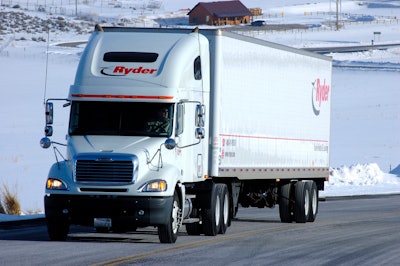
The New Year has arrived, and so too has the bitter chill of winter. According to weather forecasters, in the coming weeks, below-average temperatures are predicted to spread across the majority of the U.S., with the northern Plains and Rockies expecting to experience temperatures 20 to 40 degrees colder than average for this time of year. If you’re a fleet operator or professional driver, you’ll want to ensure that you’ve made all the proper safety preparations in order to increase your chances of maintaining vehicle uptime.
While driving in winter conditions can seem daunting, there are plenty of steps you can take to ensure a smooth trip from start to finish. Proactive planning around fleet maintenance, proper fueling, and driver training/safety can mean all the difference between making an on-time delivery and experiencing an unexpected breakdown amid freezing temperatures.
The following tips are some essentials that should be on every fleet operator’s winter driving preparedness list:
- Fleet maintenance proactive planning: An ounce of proactive prevention while temperatures are still mild will go a long way to ensure safety, reliability and fewer unexpected issues when severe weather strikes. Conducting pre-trip inspections daily and checking your tires often are examples of proper maintenance that are key for running an efficient fleet.
- Proper fueling: How you fuel your vehicles plays a vital role in being safe and efficient on the roadways during the winter months. It’s important that you consider the cold temperatures you may encounter in reaching your destination before hitting the road. For example, once temperatures drop below 20°F, it’s essential that your fuel tank is equipped with a diesel fuel anti-gel additive. Ensuring that you have quality winter blend fuel in your tank is critical. It’s also important to maintain your tank at least half full. Condensation can build up in a near-empty gas tank in extremely cold temperatures, which can cause fuel to freeze and lead to no-start conditions.
- Driver training/safety: Drivers should be trained and well-informed about how to act in response to different situations. For example, in the event of a skid, it is crucial that a driver knows to turn into the skid, depress the clutch fast, look at the left mirror only, and steer/counter-steer as fast as possible to get back in front of the trailer.
Winter weather adds a lot of variables to driving conditions, but there are driving habits that can reduce the risk of possible collisions and/or mechanical failures:
• Do not let your truck idle. The Diesel Exhaust Fluid (DEF) tank freezes at about 10 degrees, so make sure to begin driving your truck immediately to ensure the heaters warm up DEF in order for it to circulate throughout the engine.
• Don’t ignore dashboard warning lights. Be mindful that the regeneration process that is required for emissions control will not execute in extreme temperatures.
• Be aware of the signs of cold-related stress: fatigue, confusion, shivering and slowed breathing.
During the 2014 Polar Vortex, companies that had a winter preparedness plan in place experienced less business interruption than those that didn’t. As with inclement weather conditions of any kind, the level of preparedness is what largely determines a successful outcome. Are your fleet and drivers ready? Visit www.ryder.com/winterdriving for more tips and information to keep your fleet and drivers safe this winter season.

















